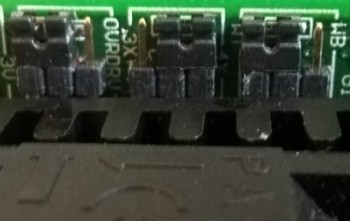Reply 40 of 74, by gerwin
- Rank
- l33t
wrote:wrote:Does it work with an Am5x86-133/160?
It does... can set clock multiplier to x2, x3, and x4... ran it on one of the Forex boards I have kickin around...
Interesting stuff. Are you sure you have that many multiplier options. AFAIK there is only one multiplier select pin (R17 CLKMUL) on the am486/586 processor, thus only two speeds..
--> ISA Soundcard Overview // Doom MBF 2.04 // SetMul

